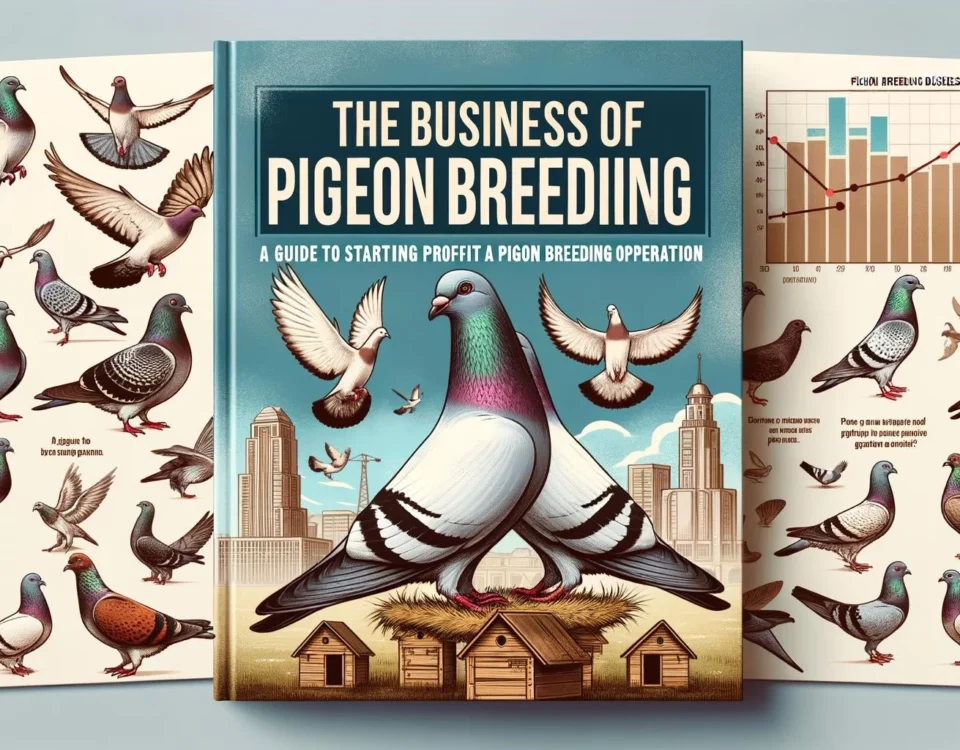From open fields to bustling cityscapes, pigeons have proven to be prolific and adaptable breeders, thriving in a myriad of environments. Their remarkable breeding habits, nest constructions, and parental care exemplify their resilience and have allowed them to flourish worldwide. However, these urban dwellers also face challenges, from predators to human conflicts, necessitating effective management strategies. Explore the fascinating world of pigeon breeding and discover how understanding their behaviour can help in controlling their population in urban spaces.
Key Takeaways
– Pigeons are an important economic poultry species and are remarkably successful birds that can nest in a variety of habitats, including urban settings.
– Pigeons are prolific breeders and can breed throughout the year, with their breeding season peaking between March and July.
– Pigeons form stable, long-term bonds and can lay clutches of one to three eggs, with the typical clutch size being two. The incubation period lasts for about 18 days.
– Both male and female pigeons contribute to nest construction, with the female primarily responsible for building the nest. Pigeon nests are simple platforms made from materials like twigs, grass, feathers, and leaves.
– Pigeon chicks, called squabs, hatch blind and helpless and rely on their parents for warmth and food. They are fed a protein and fat-rich substance called pigeon milk, which is produced by both parents.
– Pigeons face challenges during nesting, including threats from predators and human conflicts. Effective management involves limiting nesting sites and food sources.
Breeding Behavior and Nesting
Pigeons are an incredibly adaptable bird species and have successfully colonized various habitats around the world, including urban environments. They are known for their ability to breed throughout the year and form stable, long-term bonds. Pigeons can first breed when they are about six months old, and pairs may form at any time of the year.
The nesting preferences of pigeons are quite versatile. While the wild Rock Dove, the ancestor of feral pigeons, typically nests on cliffs and ledges, feral pigeons prefer human-made structures like balconies, window sills, bridges, and barns. Pigeon nests are simple platforms made up of materials like twigs, grass, feathers, leaves, and other plant materials. Both male and female pigeons contribute to nest construction, with the male bringing in materials and the female building the nest around her body.
During the nesting season, feral pigeons can lay one to three eggs, with the typical clutch consisting of two eggs. The eggs are pure white and usually measure about 39 millimeters long and 29 millimeters wide. Both parents share incubation duties, with the female incubating the eggs in the late afternoon through the following morning, and the male taking over during the day. The incubation period lasts for about 18 days.
Parental Care and Squab Development
After hatching, pigeon chicks, also known as squabs, are entirely dependent on their parents for warmth and food. Squabs are initially blind and weigh only about 15 grams when they hatch. Both parents provide their young with a special substance called crop or pigeon milk. Pigeon milk is a protein and fat-rich fluid produced by both parents. This milk allows pigeons to provide their squabs with adequate nutrition throughout the year, regardless of seasonal food sources.
Pigeon squabs require several meals of pigeon milk daily. Their eyes open around the fourth or fifth day, and they start receiving solid foods. Over time, their feeding decreases to two meals per day, and they transition to a completely solid diet. By four to six weeks, pigeon squabs are fully feathered and ready to fledge, although they may be significantly heavier than their adult weight at this stage. The young birds lose weight quickly as they begin to forage for themselves.
Challenges in Urban Settings and Effective Management
While feral pigeons have become one of the most abundant urban bird species, they face challenges during nesting. Pigeons are seen as pests in some areas due to potential disease spread and fouling of structures. Additionally, their nests, eggs, and fledglings are vulnerable to predators like corvids, owls, raptors, and mammals.
Effective management of pigeon populations involves deterring pigeons by limiting nesting sites and food sources. This can be done by installing physical barriers like spikes or netting to prevent them from accessing preferred nesting areas. Additionally, removing or limiting food sources, such as spilled food or intentionally feeding pigeons, can help reduce their population and discourage nesting in urban areas.
By understanding pigeon breeding behavior and implementing effective management strategies, it is possible to control pigeon populations and minimize conflicts in urban environments while still appreciating their adaptability and unique characteristics.









